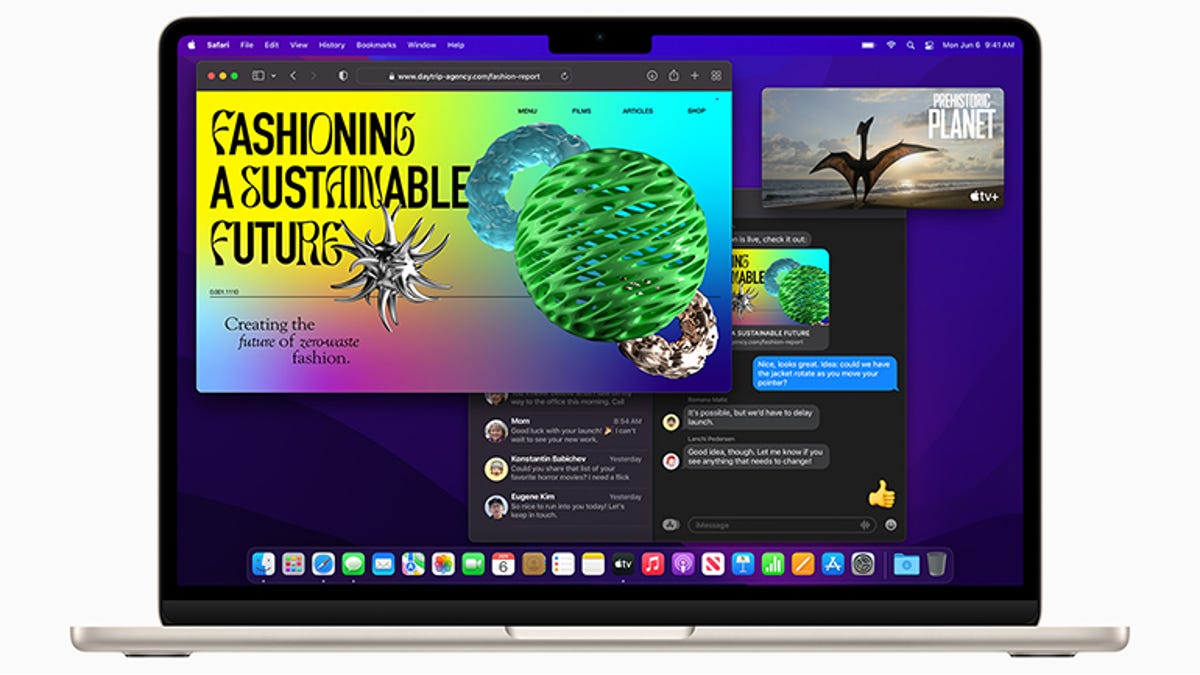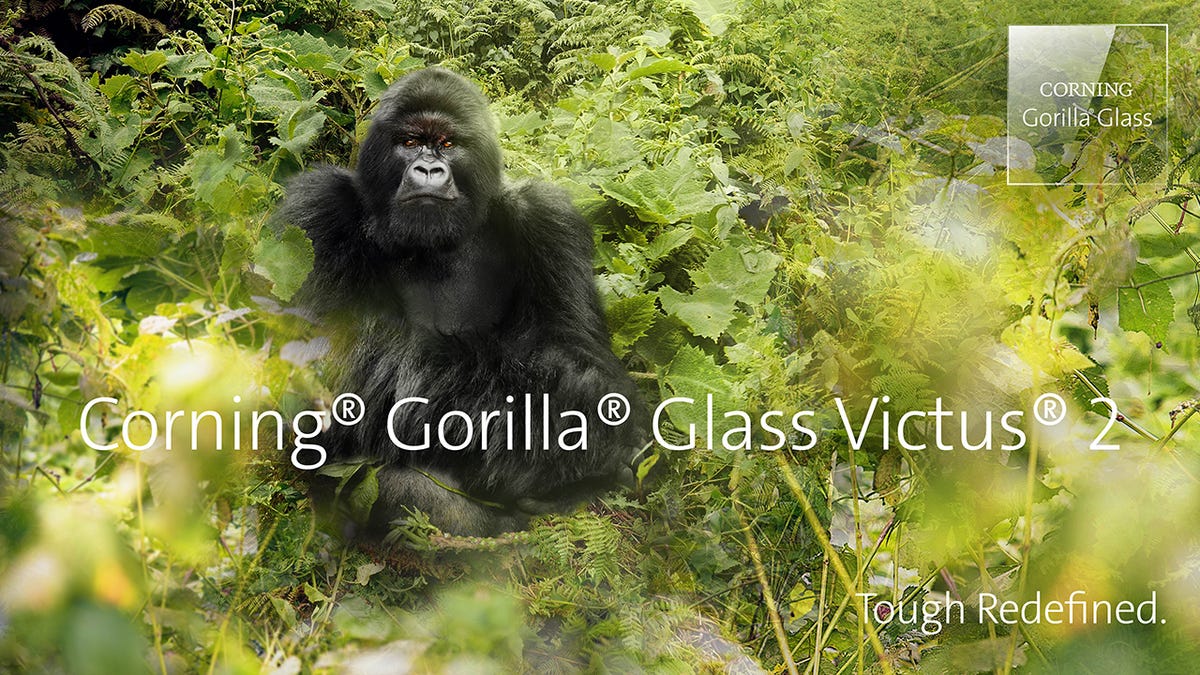Apple’s new-look MacBook Air is a sign of confidence. But there’s a catch
Apple MacBook Air (M2, 2022). Image: Apple
Apple’s last launch event in March pulled some real surprises out of the hat, with Apple managing to unveil a major new product — the Mac Studio — without any spoilers leaking onto the internet beforehand. This year’s keynote for Apple’s Worldwide Developer Conference (WWDC) may not have sprung any similar surprises, but it still managed to be a real crowd-pleaser simply by giving the audience exactly what they wanted.
The rumour mill had long predicted that WWDC would unveil a major redesign for the MacBook Air — Apple’s most affordable laptop and, according to Apple SVP John Ternus, “the world’s best-selling laptop”. The MacBook Air, after all, was one of Apple’s landmark products, a slimline ultraportable laptop that effectively created the ‘ultrabook’ category years before Intel’s marketing department came up with that name.
So successful was the design of the MacBook Air that — bar a few refinements along the way — it had remained largely unchanged ever since its launch in 2008. Even when the MacBook Air introduced Apple’s home-grown M1 processor in 2020, Apple resisted calls for a redesign — perhaps preferring to stick with a familiar design that emphasised continuity at a time when the transition from Intel processors to Apple Silicon was raising questions about the future of the entire Mac platform.
That transition is now almost complete, bar the Intel-based Mac Pro, and seems to have been surprisingly smooth and successful. The new MacBook Air is, therefore, a sign of Apple’s confidence as it both redesigns one of its flagship products and moves forward with the introduction of the second-generation M2 system-on-chip (SoC).
SEE: Every iOS 16 feature that’s coming to iPhones
As was widely predicted, the new MacBook Air (M2, 2022) has a more sharply angular design, with a rectangular profile rather than the much-copied wedge shape that tapered to a narrower point on the front edge of the keyboard.
The screen of the M2 MacBook Air is actually slightly larger — increasing from 13.3 to 13.6 inches — but Apple has still managed to reduce both the size and weight of the laptop. The M2 model now measures 11.3mm thick, compared to 16.1mm for its M1 predecessor — which remains on sale for $999 — while its weight drops slightly from 1.29kg to 1.24kg. However, Apple also adds that the overall volume of the M2 MacBook Air is 20% smaller than the M1 model.
Another sign of Apple’s confidence — less welcome this time — is that the starting price for the M2 model rises from $999 to $1199 (albeit with one extra GPU core to sweeten the deal).
Here are the M2 MacBook Air’s specifications compared to the previous M1 model.
| MacBook Air (M2, 2022) | MacBook Air (M1, 2020) | |
| System on Chip | Apple M2 | Apple M1 |
| Transistors | 20 billion | 16 billion |
| CPU cores | 4 performance, 4 efficiency | 4 performance, 4 efficiency |
| GPU cores | 8 or 10 | 7 |
| Neural Engine cores | 16 | 16 |
| Memory bandwidth | 100Gbps | 68.25Gbps |
| Media engine | Hardware-accelerated H.264, HEVC, ProRes & ProRes RAW video decode/encode, ProRes encode/decode |
n/a |
| Unified memory | 8GB, 16GB, 24GB | 8GB, 16GB |
| Storage (SSD) | 256GB, 512GB, 1TB, 2TB | 256GB, 512GB, 1TB, 2TB |
| Display | 13.6-inch Liquid Retina | 13.3-inch LED-backlit IPS |
| Resolution | 2560 x 1664 (224ppi) | 2560 x 1600 (277ppi) |
| Brightness | 500 nits | 400 nits |
| Colour gamut | DCI-P3 | DCI-P3 |
| Lighting adjustment | True Tone | True Tone |
| Dimensions (W, D, H) | 304.1mm x 215mm x 11.3mm (11.97 x 8.46in x 0.44in) | 304.1mm x 212.4mm x 4.1-16.1mm (11.97in x 8.36in x 0.16-0.63in) |
| Weight | 1.24kg (2.7lb) | 1.29kg (2.8lb) |
| Camera | 1080p FaceTime HD | 720p FaceTime HD |
| Audio | 4 speakers (Spatial Audio, Dolby Atmos), 3 mics (directional beam-forming), 3.5mm headphone jack | 2 speakers (Dolby Atmos), 3 mics (directional beam-forming), 3.5mm headphone jack |
| Input | backlit Magic Keyboard, Touch ID, ambient light sensor, Force Touch trackpad | backlit Magic Keyboard, Touch ID, ambient light sensor, Force Touch trackpad |
| Wi-Fi | Wi-Fi 6 (802.11ax) | Wi-Fi 6 (802.11ax) |
| Bluetooth | 5 | 5 |
| Ports | MagSafe, 2x Thunderbolt/USB 4 | 2x Thunderbolt/USB 4 |
| Authentication | Touch ID | Touch ID |
| Battery capacity | 52.6Wh | 49.9Wh |
| Power adapter | 30W USB-C, 35W 2x USB-C, 67W USB-C | 30W USB-C |
| Fast charging | with 67W adapter | n/a |
| Battery life | up to 15h wireless web, 18h movie playback | up to 15h wireless web, 18h movie playback |
| Price | from $1,199 (8-core GPU, 8GB unified memory, 256GB SSD), $1,499 (10-core GPU, 8GB unified memory, 512GB SSD) | from $999 |
| Available | July | now |
A barrage of graphs and charts followed this announcement, intended to prove the superiority of the M2 over both the M1 and Intel’s rival processors: 20% faster applying Photoshop filters, 38% faster for video-editing in Final Cut Pro, and more. However, we’ll have to wait until the new models go on sale in July in order to judge the performance of the M2 processor for ourselves.
MacBook Pro 13-inch (M2, 2022) Image: Apple
After all that, the announcement of an M2 upgrade for the 13-inch MacBook Pro seemed almost like an afterthought, and since this shares the same M2 processor as the MacBook Air it’s not entirely clear what now differentiates these two laptops.
For the record, here are the specs for the new MacBook Pro 13 compared to its M1 predecessor, which is now no longer available on Apple’s website.
| MacBook Pro 13-inch (M2, 2022) | MacBook Pro 13-inch (M1, 2020) | |
| System on Chip | Apple M2 | Apple M1 |
| Transistors | 20 billion | 16 billion |
| CPU cores | 4 performance, 4 efficiency | 4 performance, 4 efficiency |
| GPU cores | 8 or 10 | 7 |
| Neural Engine cores | 16 | 16 |
| Memory bandwidth | 100Gbps | 68.25Gbps |
| Media engine | Hardware-accelerated H.264, HEVC, ProRes & ProRes RAW video decode/encode, ProRes encode/decode |
n/a |
| Unified memory | 8GB, 16GB, 24GB | 8GB, 16GB |
| Storage (SSD) | 256GB, 512GB, 1TB, 2TB | 256GB, 512GB, 1TB, 2TB |
| Display | 13.3-inch LED-backlit IPS | 13.3-inch LED-backlit IPS |
| Resolution | 2560 x 1600 (277ppi) | 2560 x 1600 (277ppi) |
| Brightness | 500 nits | 500 nits |
| Colour gamut | DCI-P3 | DCI-P3 |
| Lighting adjustment | True Tone | True Tone |
| Dimensions (W, D, H) | 304.1mm x 212.4mm x 15.6mm (11.97 x 8.36in x 0.61in) | 304.1mm x 212.4mm x 15.6mm (11.97 x 8.36in x 0.61in) |
| Weight | 1.4kg (3lb) | 1.4kg (3lb) |
| Camera | 720p FaceTime HD | 720p FaceTime HD |
| Audio | 2 speakers (Spatial Audio, Dolby Atmos), 3 mics (directional beam-forming), 3.5mm headphone jack | 2 speakers (Dolby Atmos), 3 mics (directional beam-forming), 3.5mm headphone jack |
| Input | backlit Magic Keyboard, Touch Bar, Touch ID, ambient light sensor, Force Touch trackpad | backlit Magic Keyboard, Touch Bar, Touch ID, ambient light sensor, Force Touch trackpad |
| Wi-Fi | Wi-Fi 6 (802.11ax) | Wi-Fi 6 (802.11ax) |
| Bluetooth | 5 | 5 |
| Ports | 2x Thunderbolt/USB 4 | 2x Thunderbolt/USB 4 |
| Authentication | Touch Bar and Touch ID | Touch Bar and Touch ID |
| Battery capacity | 58.2Wh | 58.2Wh |
| Power adapter | 67W USB-C | 67W USB-C |
| Battery life | up to 17h wireless web, 20h movie playback | up to 17h wireless web, 20h movie playback |
| Price | from $1,299 (10-core GPU, 8GB unified memory, 256GB SSD), $1,499 (10-core GPU, 8GB unified memory, 512GB SSD) | n/a |
| Available | July | n/a |
Gaming claim
There was one interesting addendum to the launch of the new M2 MacBooks, with Apple boasting that the performance of the M2 and its updated Metal 3 graphics framework finally turns the Mac into a serious gaming platform. At this point, the internet collectively rolled its eyes, having heard this from Apple on, well, about 75 different occasions over the years. But if the M2 processor can genuinely turn the humble MacBook Air into a gaming rig capable of playing the forthcoming No Man’s Sky or Resident Evil: Village, then that really would mark a new era for the Mac.




Pingback: clase azul tequila glasses
Pingback: costa rica magic mushroom
Pingback: วิเคราะห์บอลวันนี้
Pingback: ai nude
Pingback: ติดตั้งโซลาเซลล์
Pingback: try this web-site